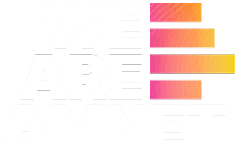In the ever-evolving world of business, the concept of outsourcing has become synonymous with adaptability and efficiency. As companies navigate the intricacies of a fast-paced global marketplace, they continually seek innovative ways to optimize their operations, control costs, and remain agile in the face of change.
In this pursuit, the landscape of outsourcing is undergoing transformation, with 2024 ushering in a set of profound trends that are reshaping the way businesses engage with outsourcing partners.
For years, outsourcing has been synonymous with offshoring, as companies sought to leverage cost advantages by contracting work to lower-wage areas. However, the onset of the COVID-19 pandemic, coupled with mounting concerns about supply chain vulnerabilities and geopolitical uncertainties, has prompted a noteworthy shift in strategy.
As we guide your business through this exploration of the future of outsourcing, we will delve deeper into each trend, examining their implications, impacts, and the strategic considerations they pose for businesses seeking to thrive in an ever-shifting landscape. The outsourcing journey continues, marked by innovation, adaptation, and the pursuit of excellence in service delivery and value creation.
The Top 5 Outsourcing Trends in 2024
AI and Automation
AI (Artificial Intelligence) and automation technologies are being integrated into outsourcing processes to enhance efficiency and reduce manual intervention.
The integration of artificial intelligence (AI) and automation into outsourcing processes will continue to grow in 2024. Businesses are leveraging AI, robotic process automation (RPA), and machine learning to streamline routine tasks, improve efficiency, and reduce costs. Outsourcing service providers are increasingly offering AI-driven solutions to enhance their offerings and provide clients with more intelligent and data-driven insights.
AI and automation can significantly streamline routine tasks, reduce errors, and improve productivity, making them attractive for businesses looking to optimize processes and lower costs.
Outsourcing providers are increasingly offering AI-driven solutions, including chatbots for customer service, robotic process automation (RPA) for data entry, and machine learning for data analysis. This integration can lead to faster turnaround times, lower operational costs, and improved accuracy. However, this may come with widespread redundancies and a loss of employment, necessitating the need for businesses and governments to enable retraining, or facilitate wide socio-economic shifts.
Outcome-Based Contracts
Traditional outsourcing contracts focus on resource and labor allocation. In contrast, outcome-based contracts are centered on achieving specific, measurable outcomes or results.
Traditional outsourcing contracts often focus on the number of hours worked or resources allocated. However, a shift toward outcome-based contracts is gaining momentum. In these contracts, the focus is on achieving specific outcomes or results, such as increased revenue, reduced costs, or improved customer satisfaction. This approach aligns the interests of both the client and the outsourcing provider more closely and encourages a results-oriented approach.
Outcome-based contracts align the interests of both the client and the outsourcing provider more closely. They encourage a results-oriented approach, where the focus is on delivering tangible benefits to the client’s business.
These contracts incentivize providers to prioritize delivering value and meeting agreed-upon outcomes, leading to a stronger partnership and a greater focus on achieving business objectives.
Data Security and Compliance
Data security and compliance have become paramount in outsourcing due to the rise in data breaches, privacy regulations (such as GDPR, HIPAA and CCPA), and heightened concerns about data protection.
With the increasing importance of data privacy and security regulations (such as GDPR, CCPA, and HIPAA), outsourcing providers are placing a stronger emphasis on data security and compliance. Clients are demanding robust cybersecurity measures and adherence to regulatory standards from their outsourcing partners. In response, outsourcing providers are investing in advanced security protocols, staff training, and compliance frameworks to protect sensitive data and maintain trust.
Protecting sensitive data and ensuring regulatory compliance are essential for maintaining trust and avoiding legal repercussions. Clients demand robust cybersecurity measures and adherence to data protection regulations from their outsourcing partners.
Outsourcing providers are investing in advanced security protocols, staff training, and compliance frameworks to safeguard client data. This trend aims to mitigate data-related risks and ensure adherence to industry-specific regulations.
Ecosystem-Based Outsourcing
Ecosystem-based outsourcing involves collaborating with multiple specialized service providers and partners to create a network of expertise.
Businesses are moving away from the traditional single-provider outsourcing model and are instead embracing an ecosystem-based approach. This involves collaborating with multiple specialized service providers and partners to create a network of expertise. Companies can tap into the specific skills and capabilities of different partners to address various aspects of their operations, resulting in more agile and customized solutions.
Companies are looking to harness the specialized skills and capabilities of different partners to address various aspects of their operations more efficiently. This approach offers flexibility and agility.
This enables businesses to access a wider range of expertise, adapt quickly to changing requirements, and achieve more customized and tailored solutions. The ecosystem approach fosters innovation and collaboration among different partners.
Smartshoring
SmartshoringⓇ is emerging as the paramount trend in the outsourcing landscape. Unlike traditional outsourcing approaches that focus solely on offshoring or onshoring, Smartshoring represents a dynamic blend of strategies.
Smartshoring reflects a growing recognition that outsourcing is not a one-size-fits-all solution. Instead, it recognizes the value of a multi-faceted approach. By communicating with an offshore partner through an account managed located in your country, businesses can tailor their outsourcing strategies to specific needs and contexts. This level of flexibility enables companies to stay competitive and responsive to changing market dynamics, making Smartshoring the top choice for businesses going forward.
Smartshoring transcends the traditional cost-cutting mindset often associated with outsourcing. While cost efficiency remains a driving factor, Smartshoring also places a strong emphasis on quality, speed, collaboration, and long-term partnerships.
Smartshoring allows for custom-tailored solutions, ensuring that specific functions align with the right geographic location, optimizing cost-efficiency and quality. Leveraging technological advancements, it fosters seamless collaboration among global teams and enhances overall efficiency. This approach also grants access to a global talent pool, particularly vital in skill-centric industries.
In summary, smartshoring empowers businesses to achieve cost savings, quality excellence, and adaptability in today’s dynamic global marketplace.
What Does the Future of Outsourcing Mean for Your Business?
These outsourcing trends collectively reflect the evolving landscape of outsourcing practices in 2024, driven by factors such as globalization, technological advancements, regulatory changes, and the need for adaptability in a rapidly changing business environment. Companies should consider these trends when developing their outsourcing strategies to remain competitive and address their specific business needs effectively.
With so many potential changes sweeping across the globe in 2024, it’s important for businesses and organizations to understand the specifics of what this means for them. Luckily, We Are Amnet can explain how these top 5 outsourcing trends could be changing the way we outsource.
- AI and Automation Integration
AI and automation enhance efficiency, reduce costs, and improve accuracy in routine tasks. However, they may necessitate reskilling or upskilling of the workforce. Businesses can leverage these technologies to optimize operations, deliver faster turnaround times, and provide enhanced customer experiences. This trend allows for resources to be allocated to more strategic tasks.
- Outcome-Based Contracts
Outcome-based contracts foster a results-oriented approach, aligning client and provider interests. They require precise measurement and monitoring of performance. Businesses can focus on achieving specific, measurable outcomes rather than simply tracking hours worked. These contracts encourage providers to innovate and deliver value, resulting in more strategic partnerships.
- Data Security and Compliance
Data security and compliance are non-negotiable in outsourcing. Failing to meet regulatory standards can lead to legal and reputational risks. Businesses can build trust with clients by demonstrating robust cybersecurity measures and strict adherence to data protection regulations. Compliance initiatives can become a competitive advantage in outsourcing partnerships.
- Ecosystem-Based Outsourcing
Ecosystem-based outsourcing involves coordinating and managing multiple specialized partners. It requires effective collaboration and communication. Businesses can tap into a diverse range of expertise, adapt quickly to changing needs, and craft highly customized solutions. Ecosystems foster innovation through collaboration with specialized providers.
- Smartshoring
Smartshoring’s ability to blend geographic diversity, operational resilience, customization, quality focus, and technological integration makes it the top outsourcing trend of 2024. Businesses that embrace this approach are better equipped to navigate today’s complex global landscape while optimizing their operations for cost-efficiency and quality.
In summary, these outsourcing trends provide businesses with opportunities to enhance their operations, reduce risks, and stay competitive in dynamic markets. To capitalize on these trends, businesses should:
- Assess their outsourcing needs and evaluate whether reshoring, onshoring, or offshore strategies align with their goals and risk tolerance.
- Invest in AI and automation technologies to optimize processes, improve efficiency, and deliver enhanced customer experiences, whilst remaining committed to ensuring stability in employment.
- Embrace outcome-based contracts to foster stronger partnerships with outsourcing providers and drive strategic objectives.
- Prioritize data security and compliance to build trust with clients and avoid regulatory pitfalls.
- Explore ecosystem-based outsourcing to access specialized skills and create dynamic, responsive solutions.
- Consider utilizing a Smartshoring model to ensure both creativity and efficiency remain key focuses in 2024 and beyond.
We Are Amnet: Be Smart With Smartshoring
Ultimately, businesses that adapt to these outsourcing trends strategically will be better positioned to thrive in an ever-evolving business landscape, ensuring their continued success and competitiveness. In order to prepare for the future of outsourcing, it’s prescient for businesses and organizations to understand how Smartshoring can streamline their operations.
Smartshoring can play a vital role in helping businesses adapt to the changes brought about by these 2023 outsourcing trends. Here’s how Smartshoring can be leveraged to address these evolving dynamics:
- Smartshoring ensures that businesses have access to a diverse pool of talent across different locations. This flexibility is valuable when relocating operations, as companies can find the right skills and expertise without geographical constraints.
- Smartshoring can connect businesses with outsourcing providers that specialize in cost-effective services without compromising quality. Companies can collaborate with providers experienced in delivering specific, measurable results and value.
- Smartshoring means partnering with a team that treats your success as its own. Consistency, security, and cohesion means you’re choosing quality and reliability with your outsourced partners.
- Smartshoring, with its focus on strategic allocation of work across locations, offers the adaptability needed to respond to changing outsourcing dynamics.
By leveraging a combination of onshore, nearshore, and offshore resources, you can navigate these trends more effectively, ensuring they have access to the right talent, technologies, and partners to thrive in a rapidly evolving business environment.
Are you ready to prepare for the future of outsourcing? Contact us now!






